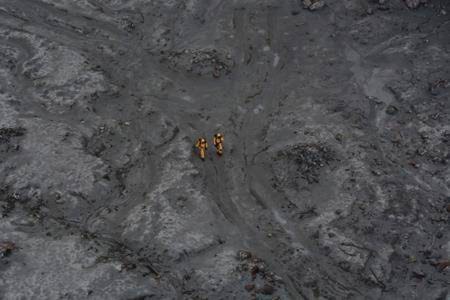Canadian Blood Services says tissue programs are prepared to send skin to New Zealand to treat the severely burned survivors of a volcanic eruption.
International tissue banks have mobilized to help New Zealand meet its need for an estimated 1.2 million square centimetres of skin to be grafted onto victims of Monday’s eruption on White Island, which killed 16 people.
A chief medical officer said 15 people remained in burn units in New Zealand hospitals Friday, including 11 whose conditions are “very critical,” and 13 Australians who were burned have returned to their home country.
A spokesman for Hema-Quebec, which manages the province’s tissue supply, said New Zealand officials contacted the tissue bank to ask if it was a position to help supply skin grafts, but have yet to place an order.
“We’ve only received a call asking if we were able to lend a hand. We’re able to do so, we will gladly do so if (that’s) the decision down in New Zealand,” said Laurent-Paul Menard. “It wouldn’t compromise our situation here in the province of Quebec.”
The bank is prepared to send about 25,000 square centimetres of skin, which is roughly a quarter of its supply, said Menard.
In 2016, Hema-Quebec assembled a committee of tissue programs that recommended Canada maintain a national reserve of 150,000 square centimetres of skin in order to be able to respond to disaster without compromising the routine activities of tissue banks.
The non-profit set a goal to maintain a reserve of 100,0000 square centimetres of skin, which amounts to about 45 per cent of the province’s annual requirements, said Menard.
A second reserve is located in Ontario, according to Hema-Quebec’s 2017-2018 report.
“The purpose of the bank is to be able to respond to an emergency situation,” Menard said. “We have to make sure that those skin grafts are readily available when a situation appears, because the first hours after such a horrific experience (are critical).”
A spokesman for Canadian Blood Services, which co-ordinates with tissue programs around the country, said after a 2013 fiery train crash killed 47 people in Lac-Megantic, Que., it became clear that Canada needed to ensure it had an adequate supply of skin grafts in case of another tragedy.
KEEP READING: Canadian actor aboard cruise ship saw beginning of New Zealand volcano eruption
“Many of these grafts are stored in Quebec, but in the event of a national disaster the skin banks across the country would come together to meet the demand,” Ross FitzGerald said in an email.
Nearly 2,800 skin grafts collected from deceased donors were distributed for transplant in 2017, according to Canadian Blood Services.
— with files from The Associated Press
Adina Bresge, The Canadian Press
